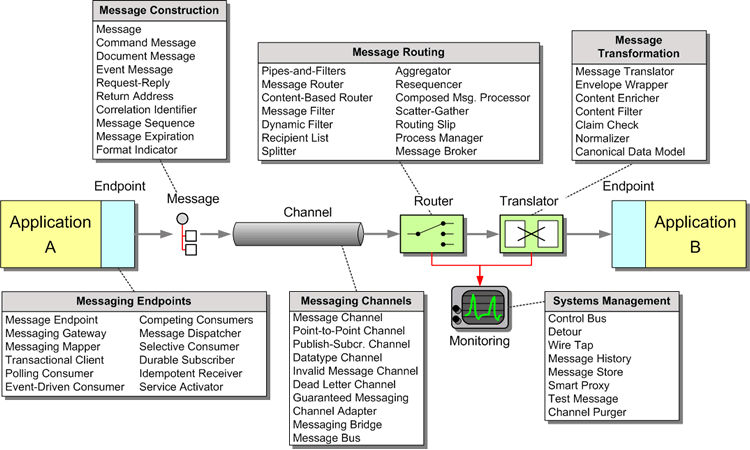The rise of the market for No-Code platforms and tools has given rise to a burgeoning population of ‘citizen developers’ – non-technical business personnel who can use these platforms to build an increasingly powerful set of business applications without writing a line of code.
As this market matures, different platforms focus on different challenges. As a result, a wider range of ‘citizen’ roles also evolve, such as citizen process creators and citizen data analysts.
High on this list: the new role of citizen integrator.
 A citizen integrator is a non-technical business user who uses a No-Code integration tool to perform either application integration or data integration tasks – as well as tasks that combine these two integration modes.
A citizen integrator is a non-technical business user who uses a No-Code integration tool to perform either application integration or data integration tasks – as well as tasks that combine these two integration modes.
Integration has always been a difficult technical task that has heretofore required the expertise of dedicated IT professionals. It is unsurprising, therefore, that there are Low-Code tools aplenty intended to simplify and streamline the work of such professionals.
The purpose of No-Code tools for the citizen integrator, in contrast, is to shift the responsibility of integration to the business. The promise is to lighten the burden on IT while giving lines of business greater flexibility and, in the end, improved customer centricity.
At least, that’s what the No-Code integration tool vendors hope. Just one problem: there’s no such thing as a citizen integrator.
Is ‘Making Integration Easy for the Business’ What We Really Want?
Any enterprise integration professional will tell you: integration is hard. In fact, it’s always been difficult, in spite of the fact that over the years, professional integration tools have become easier to use. Most of these tools now fall under the banner of Low-Code.
Yet, while today’s techie-focused integration tooling has helped simplify integration somewhat, it remains a complex, often costly challenge.
To understand why integration has such a high degree of difficulty, I dug up the following diagram from Enterprise Integration Patterns, the seminal 2004 book by Gregor Hohpe and Bobby Wolf.
 Enterprise Integration Patterns (click here for a hyperlinked version)
Enterprise Integration Patterns (click here for a hyperlinked version)
At the time Hohpe and Wolf documented 64 distinct integration patterns, and in the 14 years since publication, this number has actually gone up. After all, we must now add cloud and container-specific patterns to the mix.
It’s no wonder, therefore, that most of today’s enterprise integration tools require a high level of technical expertise, even as their user interfaces have matured.
The bottom line: to deliver the power and flexibility of enterprise-class integration, an expert must understand how and when to apply the dozens of integration patterns in the diagram, regardless of the ease of use of the tooling at their disposal.
At the opposite extreme from such powerful, Low-Code tools for integration professionals are the No-Code tools for citizen integrators. These tools eschew all but the most basic of integration patterns and leverage pre-built integrations whenever possible.
If you’re connecting two popular apps with well-understood, stable APIs, such citizen integration is typically straightforward. The question, of course, is just how powerful these tools are for the more complicated integration scenarios commonplace in enterprise environments.
How sophisticated can the integrations amenable to the citizen integrator be, given the fundamental complexity of enterprise integration generally?
Never the Twain Shall Meet
We thus have two classes of integration technologies: powerful Low-Code tools for professional integrators, and easy-to-use No-Code tools for citizen integrators.
The key question: will we ever get power and non-technical ease-of-use in the same platform, thus opening up the full breadth of enterprise integration to citizen integrators?
After all, wouldn’t a single integration platform powerful enough to handle the complexities of enterprise integration but simple enough for non-techies to use be the true killer app of integration?
Perhaps. To be sure, the vendors in each of these market segments are driving innovation in predictable ways: the professional tools are becoming easier to use, incorporating visual drag-and-drop functionality more familiar to Low-Code/No-Code platforms, thus becoming fully Low-Code in their own right.
Correspondingly, the vendors of No-Code citizen integrator tools are adding increasingly powerful capabilities, in the hopes that they can take market share away from the first segment.
But the gap between these two extremes is still wider than we’d like, and no fancy drag-and-drop GUI is going to close it, because the gap is not in the tooling. It’s in the necessary expertise.
The leap from simple integration scenarios to the ins and outs of the proper application of the patterns above is just too great – unless we change the way we think about integration.
Rethinking the Context for Citizen Integration
There are plenty of vendors of Low-Code/No-Code integration tools who are looking at the diagram above and thinking about how they can sufficiently abstract all those integration patterns so that a citizen integrator doesn’t have to worry about them.
Their presumption is that citizen integrators want to be able to connect A to B simply and without any technical expertise, for any value of A or B relevant to the enterprise.
However, this line of reasoning is incorrect. In reality, there is no reason why a business person would want to become a ‘citizen integrator.’ And there likely never will be.
I’m not trying to say that there are no business users performing integration tasks. Examples of such activities are increasingly common. However, you’re not likely to go into a business meeting and have a discussion about connecting A to B.
Business users may want insights into their business, or smoothly running processes, or lowered business risk, or any number of other business priorities, but connecting A to B isn’t on the list. That’s just plumbing.
The bottom line: integration is a means to a business end, but the business doesn’t really care about integration, as long as it’s working properly. After all, you don’t think about the water pipes when you brush your teeth – unless there’s a problem, and then you call a plumber.
Here’s the disconnect: as vendors think about what they might want a citizen integrator to do, they take plumbing tasks and simplify them. After all, there are plenty of situations where business users might want a hand in building business applications. Doesn’t the same principle apply to integration as well?
Absolutely not. Applying Low-Code/No-Code principles to integration is not analogous to applying them to application creation, because in the digital era, applications are business concerns. Integration, however, is not – unless it’s broken, and then business users want to call a plumber.
The Intellyx Take
After interacting with integration professionals as well as citizen developers for many years, I’ve yet to run into anybody who identifies themselves as a citizen integrator. My theory: nobody calls themselves a citizen integrator.
Even though there are plenty of situations where a business user might want to perform some kind of integration, such a need won’t make the person a citizen integrator, because integration is never the business context for the task at hand.
Instead, here’s an example of how I envision a business user doing the work of what we might have wanted to call ‘citizen integration’ in the not-so-distant future:
The business person asks, “Siri, of our most profitable customers, which demographic tweets most favorably about our new product line?”
The query above instructs an AI-based agent to bring together customer data (perhaps from Salesforce), financial data (maybe from SAP), and data from Twitter, perform a complex data join, and then place the result into the context of the company’s product strategy and display the results.
The person making such a request will not be thinking of themselves as a citizen integrator, because the business context for the task at hand isn’t integration – the context in this case is the desired insight into the business.
The rest of the integration story? Nothing but plumbing.
If you call yourself a citizen integrator, then we want to hear from you! Please drop us a line. Copyright © Intellyx LLC. Intellyx publishes the Agile Digital Transformation Roadmap poster, advises companies on their digital transformation initiatives, and helps vendors communicate their agility stories. As of the time of writing, none of the organizations mentioned in this article are Intellyx customers. Image credit: Stephen Edmonds.



